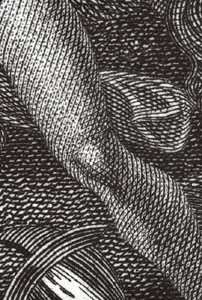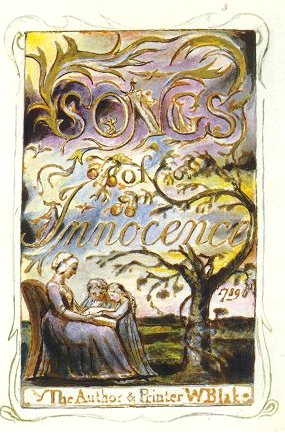In her op-ed piece for the New York Times,” They Broke It,” Judith Flanders observes that Waterford Wedgwood would not now be facing bankruptcy and closure if it had maintained the innovative, entrepreneurial spirit of its founder, Josiah Wedgwood (1730 – 1795). The son of a potter, Wedgwood was interested in science and experimented with glazes and pottery techniques; in the 1760s, he developed a functional glazed pottery initially called “creamware” that tolerated temperature changes and could even be decorated. Beyond these technical innovations, however, Wedgwood revolutionized retailing. Flanders writes:
He threw himself into various schemes to improve roads and canals. And, more fundamentally, he developed new ways of selling. Most, if not all, of the common techniques in 20th-century sales — direct mail, money-back guarantees, traveling salesmen, self-service, free delivery, buy one get one free, illustrated catalogues — came from Josiah Wedgwood.
My favorite example of Wedgwood’s understanding of his market involves the fad of skin bleaching:
In 1772, when women started bleaching their hands with arsenic to make their skin a fashionable porcelain tone, Wedgwood immediately advertised black teapots: against this background, hands looked even whiter.
The image of deathly-white hands on a black tea pot is certainly striking in its own right, but it also reveals Wedgwood’s eye for his audience, his attention to fashions of the day, and a responsive advertising style that could capitalize on trends seemingly far outside the realm of pottery.
In 1815, William Blake engraved more than 100 figures for the Wedgwood catalogue (Letter 65, Erdman 770). And, like Wedgwood, Blake advertised new methods and innovative products to the public. In his 1793 “Prospectus,” Blake describes a method of printing he calls “illuminated printing”:
TO THE PUBLIC October 10, 1793
The Labours of the Artist, the Poet, the Musician, have been proverbially attended by poverty and obscurity; this was never the fault of the Public, but was owing to a neglect of means to propagate such works as have wholly absorbed the Man of Genius. Even Milton and Shakespeare could not publish their own works.
This difficulty has been obviated but the Author of the following productions now presented to the Public; who has invented a method of Printing both Letter-press and Engraving in a style more ornamental, uniform, and grand, than any before discovered, while it produces works at less than one fourth of the expense.
If a method of printing which combines the Painter and the Poet is a phenomenon worthy of public attention, provided that it exceeds in elegance all former methods, the Author is sure of his reward.
Unlike Wedgwood, however, Blake’s artistic innovations have been problematic for the reading audience, purchasing public, and the institutions of publishing, art, and literature of both his day and subsequent centuries. Where Wedgwood’s marketing practices and retail strategies have been conceived of as revolutionary and responsive, Blake’s were problematic and defiant. In A Critique of Modern Textual Criticism, Jerome McGann writes that Blake “tried to produce his own work in deliberate defiance of his period’s normal avenues of publication” (McGann 44). In “Graphicality: Multimedia Fables for ‘Textual’ Critics,” Morris Eaves writes that “[Blake] had refused to attempt major paintings in oil, refused to attempt major poetry in print, put major effort in minor media like graphics and watercolor, buried epic poems in etched and watercolored imagery, and trapped sublime designs in webs of words” (Eaves 106).
Unlike Wedgwood’s durable, decorative, and mass-produced pottery, Blake’s illuminated works present a problem; the integration of image and text that cannot be easily mass-produced or subsumed within the institutions of art and literature become a “special case.” While Blake eventually does seek reconciliation with the “publishing institution of his period,” his interest “withered because of the special character of his works” (McGann 46). As Eaves describes it:
By cultivating a single medium that joins two arts, Blake put tremendous stress on the ability of ordinary legitimizing processes to function, and that stress had an unfortunate effect on the course of his reputation […] The continuous integrality of the illuminated books, which embed the textual and the pictorial in one physical medium, is a solution that creates a whole new set of problems for individual consumers and the institutions that serve and are served by them. (Eaves 105-111)
As a consequence of the problems posed by Blake’s illuminated works – their unique status as both text and image – Blake has been institutionally divided between art and literature. One of the fundamental aims of the Blake Archive is to reconcile this divide between Blake’s poems and his visual art; that is, to engage directly with the problems posed by the special character of Blake’s works.
The dominant tradition of Blake editing has been overwhelmingly literary. The historical Blake, a printmaker and painter by training who added poetry to his list of accomplishments, has been converted, editorially, into a poet whose visual art is acknowledged but moved off to the side where it becomes largely invisible, partly because of what one of Blake’s first critics, the poet Swinburne, called “hard necessity”—the technological and economic obstructions that have prevented the reproduction of accurate images in printed editions. On the art-historical flank a productive scholarly tradition of cataloguing has been complementary to but largely disconnected from its editorial counterpart on the literary flank. Consequently, many students and even professional scholars know either the textual or visual side of Blake’s work but not both, despite their interconnections at the source. Methodologically, the William Blake Archive is an attempt to restore historical balance through the syntheses made possible by the electronic medium. (“Editorial Principles“)
Of course, just as Blake’s “solution” (illuminated printing) to the technological problems of producing print and image together on the page created “new sets of problems,” the ambitious aims of the Archive also cause complications, and we are often struggling with questions about how to describe ambiguous visual images in clear, searchable prose, or deciding which XML tags and attributes will best describe Blake’s manuscripts.
(For a detailed account of Blake’s process of illuminated printing, see Joseph Viscomi’s “Illuminated Printing.”)
——
Eaves, Morris. “Graphicality: Multimedia Fables for ‘Textual’ Critics.” Reimagining Textuality: Textual Studies in the Late Age of Print. Eds Elizabeth Bermann Loizeaux and Neil Freistat. U Wisonsin Press: Madison, WI: 2002.
Keynes, Geoffrey, ed. Blake: Complete Writings with Variant Readings. Oxford U Press, 1966.
McGann, Jerome J. A Critique of Modern Textual Criticism. U of Chicago Press: Chicago, 1983.
Continue reading



